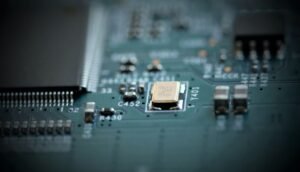Is Neural Net AI?
Artificial Intelligence (AI) is a rapidly evolving field that encompasses various technologies and approaches. One of the most prominent techniques used in AI is Neural Networks (NN). But, is Neural Net really AI? Let’s explore this question further.
Key Takeaways:
- Neural Networks are a subfield of Artificial Intelligence.
- They are designed to mimic the structure and function of the human brain.
- Neural Networks are effective in pattern recognition and decision-making tasks.
Neural Networks are computational models inspired by the human brain’s neural structure and functionality. They consist of artificial neurons (nodes) interconnected with weighted connections to simulate the flow of information within a network. *Neural Nets are adept at pattern recognition, making them a valuable tool in various applications.* They can be trained on large datasets to learn complex relationships and predict outcomes with high accuracy.
Neural Networks have revolutionized fields such as computer vision, speech recognition, and natural language processing. With advances in hardware and algorithms, they have become increasingly popular in AI research and applications. Their ability to learn and generalize from data sets them apart from traditional rule-based programming.
| Traditional Programming | Neural Networks |
|---|---|
| Explicitly programmed rules | Learn patterns from data |
| Require extensive manual coding and updates | Autonomously adapt to new data |
| Less adaptability and scalability | Highly adaptable and scalable |
One of the fascinating aspects of Neural Networks is their ability to process data in parallel, which allows them to handle vast amounts of information efficiently. *This parallel processing capability enables Neural Nets to excel in tasks such as image recognition, where each pixel’s value can be processed simultaneously.*
How Neural Networks Learn
Neural Networks learn through a process called training. During training, the network is exposed to labeled examples, allowing it to adjust the synaptic weights between neurons. This adjustment, known as backpropagation, helps the network identify the patterns and features that lead to accurate predictions.
- Training data is fed into the network.
- Neurons process the data and make predictions.
- The network’s predictions are compared to the actual labels.
- Based on the prediction errors, the weights are adjusted to minimize the errors.
- The process is repeated iteratively until the network achieves the desired level of accuracy.
| Architecture | Applications |
|---|---|
| Feedforward Neural Network | Pattern recognition, classification |
| Recurrent Neural Network | Sequence prediction, language modeling |
| Convolutional Neural Network | Image processing, object detection |
Neural Networks continue to evolve, with researchers exploring more complex architectures and training techniques. Deep Learning, a subset of Neural Networks, tackles even more advanced tasks by introducing multiple layers of interconnected neurons. These complex networks have shown remarkable capabilities in areas such as natural language understanding, autonomous driving, and medical diagnosis.
In conclusion, Neural Networks are undeniably a form of Artificial Intelligence. Their ability to learn from data, recognize patterns, and make decisions aligns with the core principles of AI. Whether it is computer vision, natural language processing, or any other AI domain, Neural Networks play a crucial role in driving advancements and pushing the boundaries of AI technology.

Common Misconceptions
Neural Net AI vs. Common Misconceptions
Many people have misconceptions about what a neural net AI actually is. Here are some common misconceptions:
- Neural net AI can think and reason like a human.
- Neural net AI will replace all human jobs.
- Neural net AI is infallible and always accurate.
Firstly, one common misconception is that neural net AI can think and reason like a human. While neural networks and deep learning algorithms can process vast amounts of data and make complex decisions based on patterns, they do not possess human-like consciousness. Neural net AI utilizes mathematical algorithms and statistical models to process data, but it lacks emotions, self-awareness, and the ability to think abstractly as humans do.
- Neural net AI is composed of algorithms and mathematical models.
- Neural net AI lacks human-like consciousness.
- Neural net AI cannot think abstractly like humans.
Another misconception is that neural net AI will replace all human jobs. While AI has the potential to automate certain tasks and improve efficiency in various industries, it is unlikely to replace all jobs. Neural net AI systems excel in handling repetitive, rule-based tasks, but they struggle with creativity, complex problem-solving, and empathy – skills that are inherent to many job roles. Instead of replacing human workers, AI is more likely to enhance productivity and allow humans to focus on more meaningful, specialized work.
- Neural net AI can automate certain tasks, but not all jobs.
- Neural net AI struggles with creativity, complex problem-solving, and empathy.
- Neural net AI is more likely to enhance productivity than replace human workers.
Lastly, there is a misconception that neural net AI is infallible and always accurate. While AI technologies have seen significant advancements, they are still prone to errors and biases. Neural networks are only as good as the data they are trained on. If the training data is incomplete or biased, the AI system’s output may also be flawed. Additionally, AI systems can face challenges when presented with unfamiliar or unpredictable scenarios. Therefore, it is important to recognize that neural net AI is not perfect and should be used as a tool to assist humans, rather than relying solely on its predictions or decisions.
- Neural net AI is prone to errors and biases.
- AI systems heavily depend on the quality of training data.
- AI can face challenges with unfamiliar or unpredictable scenarios.
In conclusion, understanding the common misconceptions around neural net AI is crucial for avoiding unrealistic expectations and making informed decisions about its applications. Neural net AI is not capable of human-like thinking, should be viewed as a complement rather than a replacement for human workers, and has its limitations in terms of accuracy and reliability. By understanding these misconceptions, we can approach AI integration more responsibly and harness its potential effectively.

Is Neural Net AI?
Artificial Intelligence (AI) has been a topic of intrigue and fascination for decades. One subset of AI, known as neural networks, has gained prominence due to its ability to mimic certain cognitive abilities of the human brain. However, there is ongoing debate about whether neural networks can truly be considered AI. In this article, we will explore ten different aspects of neural networks and their relationship to AI, shedding light on this fascinating technology.
A Brief Overview of AI
Before delving into the intricacies of neural networks, let us first understand what is generally meant by AI. Artificial Intelligence is the branch of computer science that aims to develop machines capable of performing tasks that are characteristic of human intelligence. These tasks can range from simple pattern recognition to complex decision-making processes.
The Role of Neural Networks in AI
Neural networks, inspired by the structure and functioning of the human brain, are a fundamental component of AI. They are responsible for learning and adapting to input data, allowing machines to identify patterns, make predictions, and perform various intelligent tasks. The following ten tables will explore different facets of neural networks, providing insights into their AI capabilities and limitations.
Table 1: Recognizing Handwritten Digits
A neural network can be trained to recognize handwritten digits, a complex task for traditional algorithms. Various neural network architectures have achieved exceptional accuracy, nearing human-level performance.
Table 2: Language Translation
Neural networks can be used to improve language translation services. By leveraging large datasets, these networks can learn the nuances of different languages and generate more accurate translations.
Table 3: Facial Recognition
Facial recognition technology, often used for security purposes, relies on neural networks. These networks analyze facial features, enabling systems to identify individuals with a high degree of accuracy.
Table 4: Self-Driving Cars
Neural networks play a pivotal role in self-driving car technology. They process sensor data in real-time, enabling vehicles to detect obstacles, pedestrians, and traffic signs, thereby ensuring safe navigation.
Table 5: Diagnosing Diseases
Artificial neural networks have been trained to diagnose various diseases based on symptoms and medical datasets. Their diagnostic accuracy can be comparable to experienced medical professionals, aiding in early detection and treatment planning.
Table 6: Playing Games
Neural networks have emerged as formidable opponents in games such as chess, Go, and poker. By training on massive amounts of gameplay data, these networks develop strategic thinking and decision-making capabilities.
Table 7: Stock Market Prediction
Using historical market data, neural networks can assist in predicting stock market trends. While not infallible, they can provide useful insights to investors in making more informed trading decisions.
Table 8: Artistic Style Transfer
Neural networks can transform ordinary photos into artistic masterpieces by transferring the style of famous paintings onto the images. This fusion of artistic styles and images has led to captivating and visually striking results.
Table 9: Natural Language Processing
Neural networks have revolutionized natural language processing tasks, such as sentiment analysis and text generation. They enable machines to understand and generate human-like language, facilitating better communication and document processing.
Table 10: Speech Recognition
Speech recognition systems rely on neural networks to convert spoken words into written text. With advancements in deep learning, these systems have become more accurate, enabling seamless voice commands and dictation.
The Fascinating Connection: Neural Networks and AI
From recognizing handwritten digits to conquering complex games and assisting in medical diagnoses, neural networks exemplify the power of AI. While there are valid arguments about what constitutes true artificial intelligence, the remarkable capabilities demonstrated by neural networks undeniably contribute to the development and progress of AI. As technology continues to advance, these networks are likely to play an increasingly significant role in shaping the future of AI-driven systems.
Frequently Asked Questions
Is Neural Net AI?
What is a neural network?
How does a neural network work?
Is a neural network considered artificial intelligence (AI)?
What are the applications of neural networks?
Can a neural network learn without human intervention?
Are neural networks limited to solving specific problems?
What are some limitations of neural networks?
Can a neural network be combined with other AI techniques?
Are there different types of neural networks?
Can neural networks surpass human performance?




